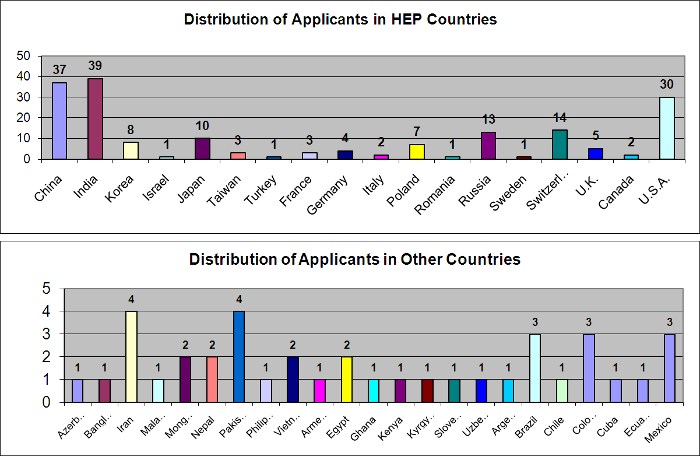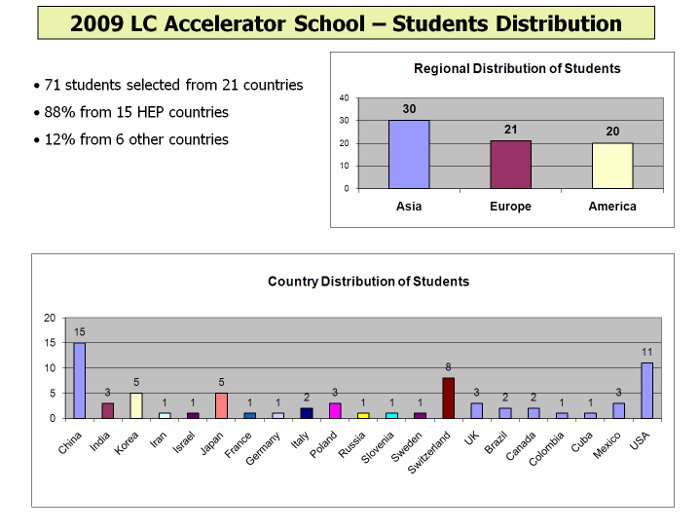Director's Corner
16 July 2009
 Barry Barish |
Students admitted to LC accelerator school
Preparations continue toward our "Fourth International Accelerator School for Linear Colliders" to be held from 7 to 18 September in Beijing, China. The school continues to draw a large applicant pool as we received a total of 244 applications from 41 countries, similar to last year in the U.S. (245) and the year before in Italy (243). Thanks to the hard work of the three regional student selection teams, we have selected 71 highly qualified students for the 2009 school. There are another ten on the waiting list. We are very pleased with the admitted class and we will now work hard to arrange travel and visas, and to organise the programme in preparation for a hopefully very stimulating and educational experience for our students.
 The applicant pool for this year's LC accelerator school consisted of 244 applicants from 41 countries The applicant pool for this year's LC accelerator school consisted of 244 applicants from 41 countries |
 The distribution by country of origin of the 71 accepted students The distribution by country of origin of the 71 accepted students |
The organisation is done jointly by the Global Design Effort, International Linear Collider Steering Committee (ILCSC) and the International Committee for Future Accelerators (ICFA) Beam Dynamics Panel. The overall popularity and success of the school clearly indicates that it is filling an important need for the high-energy physics community. Like last year, there are about as twice many applicants from the host region, Asia, as from Europe or the Americas. This year, there were more from China (37 vs. 5 last year), because the school is held in China, and we had an increase from Switzerland (14 vs. 3 last year), mostly from CERN (13). There are fewer applications, but still a substantial number from India (39 vs. 81 last year) and we received applicants from countries like Cuba, Kenya, Azerbaijan and Kyrgyzstan. The country distribution of accepted students is shown in the figure with good regional balance: 30 participants from Asia, 21 from Europe and 20 from North and South America.
The focus of the school will be on Terascale linear colliders including the ILC, the Compact Linear Collider Study (CLIC) and the muon collider. The attendees are graduate students, postdoctoral fellows and junior researchers from around the world, including physicists who are considering a career change from experimental physics to accelerator physics.
For this year's school, we are evolving our curriculum to provide a more in-depth experience that could be of value to students who participated in our earlier schools. As a result, we have accepted eight students who have already taken part in previous years. The curriculum will contain an overview of the different future Terascale lepton collider options and a lecture on linac basics, followed by a choice of two in-depth tracks: one on damping rings, linacs and beam delivery system; and one on superconducting and warm radiofrequency (RF) technology, low-level RF and high-power RF.
This year we have a set of excellent lecturers, well-qualified students, a new in-depth curriculum and a good venue for the school. Everything points to what I am expect will be another very successful linear collider accelerator school!
-- Barry Barish